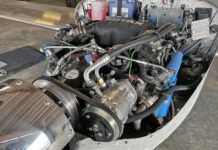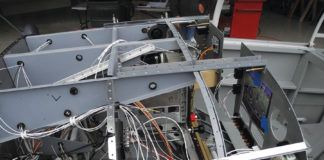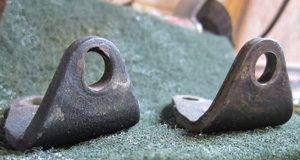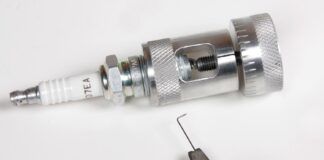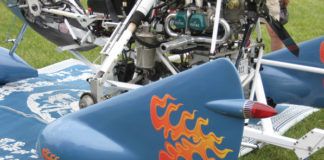
On Friday, September 2, a unique airplane touched down at the Torrance, California, airport. Its pilots, looking as you’d expect a pair who have been on the road since the first week of August, were less impressed by making California than surviving the high-traffic conditions in the corridor above Los Angeles International. Their nonchalance was well earned: They’d just arrived, after a fashion, from the airplane’s birthplace in Johannesburg, South Africa.
An around-the-world trip is difficult enough, but for pilots James Pitman and Jean d’Assonville there’s an additional challenge. The airplane they’re sharing on this global jaunt is the first of its type, the Sling 4. This South African design neatly splits the difference between a lightweight two-seater and a full-size four-place airplane. In some ways, it’s a 2+2, though the back seat comfortably fits two adults.
On August 7, the Sling 4 departed South Africa for points east. With stops in Sri Lanka, Thailand, Taiwan, Guam, the Marshall Islands and Hawaii before making the long overwater flight toward the U.S. west coast, the flight encountered just the usual number of bureaucratic delays and no mechanical issues. “In fact,” says Pitman, “you could say the flying was the easiest part. The airplane has been fantastic. But we have had various challenges on the ground.” Indeed, in Hawaii, a misunderstanding on the need for a High Frequency (HF) communications radio forced the crew to quickly rent and adapt an Icom radio and long-wire antenna—stretching from the top of the rollover bar to the tip of the tail and turning back toward the left wingtip—to meet U.S. requirements for long overwater flights.
For Pitman and d’Assonville, the mission is more one of personal endurance than it is worrying about the Rotax 914-powered aircraft. So far, the longest legs have been around 3900 kilometers (just more than 2400 miles) covered in 22.5 hours. With 119 gallons of fuel on board in a combination of larger main wing tanks and a small fuselage tank, the modified Sting 4 has 24 hours’ endurance. (The production Sting 4 and the kit derivative will have 40 gallons’ fuel.) On the first half of the trip, Pitman and d’Assonville had block-to-block average speeds from 108 mph to 138 mph, variable according to winds aloft and predicted fuel usage on any given leg.

By Tuesday, September 6, the crew was ready to depart California for the second half of the journey, homeward bound, with intended stops in Mexico, Costa Rica, Colombia, Brazil, Ghana, Congo and then returning to Lanseria Airport in Johannesburg. All told, the trip will cover 44,377 km (27,735 statute miles) and conclude on September 24. “That’s a long way, we knew that,” said d’Assonville at the welcome dinner in Torrance. “I bought a little blow-up globe to help me get my head around [the distance]. It’s over the Pacific Ocean that you realize what a huge world this is.”
You can follow the remainder of the flight here.





